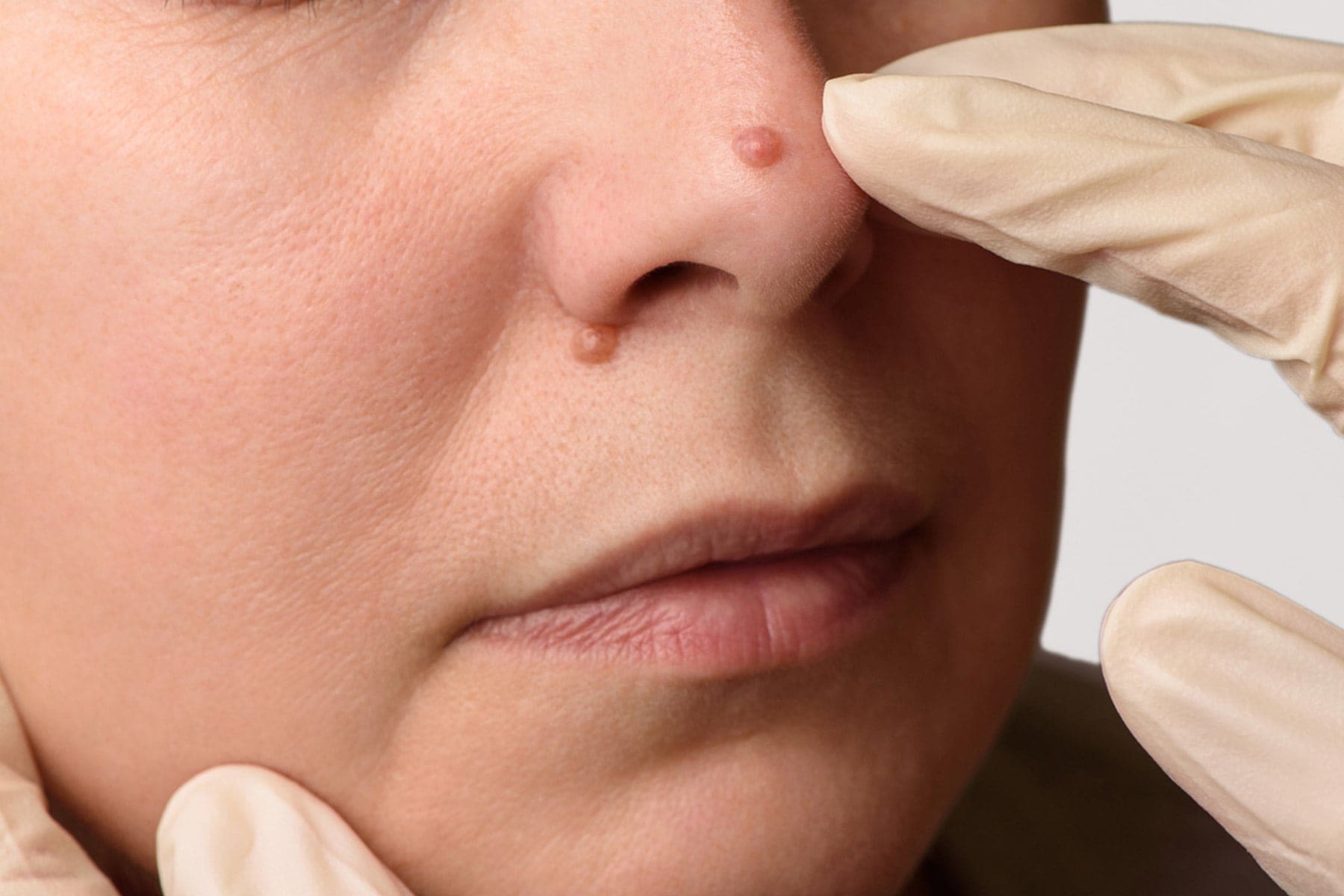What are the symptoms of flat warts?
Flat warts, also known as plane warts, are small, smooth, flat-topped, flesh-colored or slightly pinkish warts that often appear in clusters. They typically develop on the face, neck, hands, wrists, and knees, but can occur anywhere on the body. The symptoms of flat warts may include:
- Small, smooth bumps: Flat warts are typically small, ranging in size from 1 to 5 millimeters in diameter. They are usually flat or slightly raised and have a smooth surface.
- Flesh-colored or slightly pinkish: Flat warts are often the same color as the surrounding skin, but may be slightly lighter or darker.
- Clusters: Flat warts tend to occur in clusters or groups, rather than individually. They may form a small patch of warts that are close together.
- No symptoms: Flat warts are usually painless and do not cause any other symptoms. However, they may be itchy or irritated if they are rubbed or scratched.
- Spread: Flat warts can spread to other areas of the body through direct contact or by sharing personal items such as towels or razors.
It’s important to note that flat warts are caused by the human papillomavirus (HPV) and are contagious. If you have flat warts, it’s a good idea to avoid touching them or picking at them to prevent spreading the virus to other areas of your body or to other people. If you are concerned about flat warts or if they are causing symptoms, consult with a healthcare provider for evaluation and treatment options.
What are the causes of flat warts?
Flat warts are caused by infection with certain types of the human papillomavirus (HPV). HPV is a group of viruses that can infect the skin and mucous membranes. There are more than 100 different types of HPV, and some types can cause warts on the skin.
Flat warts are typically caused by HPV types 3, 10, 28, and 49. These types of HPV are usually spread through direct contact with an infected person or by touching surfaces or objects that have been contaminated with the virus. Flat warts are more common in children and young adults, although they can occur at any age.
Risk factors for developing flat warts include:
- Direct contact: Coming into direct contact with an infected person or touching surfaces or objects that have been contaminated with the virus can increase the risk of developing flat warts.
- Weakened immune system: A weakened immune system, such as in people with HIV/AIDS or those taking immunosuppressive medications, can increase the risk of developing flat warts.
- Scratching or picking at warts: Scratching or picking at flat warts can spread the virus to other areas of the body.
- Sharing personal items: Sharing towels, razors, or other personal items with an infected person can spread the virus and increase the risk of developing flat warts.
It’s important to note that not everyone who is exposed to HPV will develop flat warts. Some people may be more susceptible to the virus due to genetic factors or other unknown reasons. If you have flat warts or are concerned about your risk of developing them, consult with a healthcare provider for evaluation and advice.
How is the diagnosis of flat warts made?
The diagnosis of flat warts is typically made based on the appearance of the warts and their characteristic features. A healthcare provider can usually diagnose flat warts by visually examining the affected area. Flat warts are typically small, smooth, flat-topped, flesh-colored or slightly pinkish warts that often appear in clusters.
In some cases, a healthcare provider may perform a skin biopsy to confirm the diagnosis. During a skin biopsy, a small sample of the wart tissue is removed and examined under a microscope. This can help rule out other conditions that may cause similar symptoms.
If you have flat warts or are concerned about your skin, it’s important to consult with a healthcare provider for an accurate diagnosis and appropriate treatment.
What is the treatment for flat warts?
Treatment for flat warts is not always necessary, as they often go away on their own without causing any problems. However, if flat warts are causing symptoms or are cosmetically undesirable, treatment options may include:
- Topical medications: Over-the-counter medications containing salicylic acid or prescription medications containing retinoids may help remove flat warts by peeling away the top layer of skin.
- Cryotherapy: This involves freezing the wart with liquid nitrogen, which destroys the affected skin cells. Cryotherapy is typically performed in a healthcare provider’s office.
- Electrosurgery: This involves using an electric current to burn off the wart. Electrosurgery is typically performed in a healthcare provider’s office.
- Laser therapy: This involves using a laser to destroy the wart. Laser therapy is typically performed in a healthcare provider’s office and may require multiple treatments.
- Immunotherapy: This involves using medications to stimulate the body’s immune system to attack the wart. Immunotherapy is typically used for larger or more stubborn warts.
- Surgical removal: In some cases, surgical removal of the wart may be necessary, especially if other treatments have not been effective.
It’s important to note that flat warts can be stubborn and may require multiple treatments to completely resolve. It’s also important to follow up with a healthcare provider for monitoring and to ensure that the warts do not return. If you have flat warts or are concerned about your skin, consult with a healthcare provider for an accurate diagnosis and appropriate treatment options.

Leave a Reply
You must be logged in to post a comment.